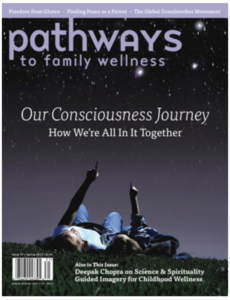Our Consciousness Journey
The sixth man to walk on the moon, astronaut Edgar Mitchell’s epiphany of oneness inspired him to explore the frontier of inner space: human consciousness. The institute he founded to investigate his “noetic” experience and their forty years of scientific research heavily inspired and guided Kindred’s editor, Lisa Reagan, on her Mother (of a) Quest and her understanding there is an Old Story, guided by industrial values and beliefs in separateness, passing away at this time and a New Story, of interconnected consciousness, emerging across multiple fields of science simultaneously. It is the Cultural Creative families who are exploring this story, and the professionals, practitioners and like-minded organizations that Kindred serves today.
The Epiphany
Moon dust floated throughout the command module as the Apollo 14 astronauts piloted the spacecraft into a slow spin, exposing all sides of the Kitty Hawk to the sun’s rays and pointing its five rotating windows toward a luminous, blue-and white planet. Settling in for the three-day flight home, Captain Edgar Mitchell, the sixth man to walk on the moon, shifted his thoughts toward the expansive view outside the spacecraft and reflected on the lunar mission’s accomplishments.
“This wasn’t the achievement of an individual, a space agency, or even a country,” Mitchell wrote in his autobiography, The Way of the Explorer: An Apollo Astronaut’s Journey Through the Material and Mystical Worlds. “This was, rather, the achievement of our species, our civilization. Life had come a long way since it first sprang from the Earth’s rock and water.”
What happened next, when the veil of moon dust settled in the cabin as the command module hurtled through the heavens at 36,300 feet per second, would catapult Mitchell into a previously unimaginable frontier of scientific exploration: human consciousness.
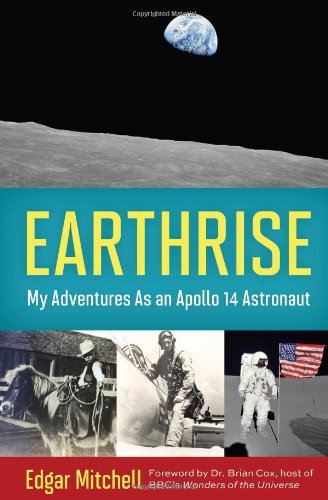 “What I experienced during that three-day trip home was nothing short of an overwhelming sense of universal connectedness. I actually felt what has been described as an ecstasy of unity. It occurred to me that the molecules of my body and the molecules of the spacecraft itself were manufactured long ago in the furnace of one of the ancient stars that burned in the heavens about me. And there was a sense that our presence as space travelers, and the existence of the universe itself, was not accidental, but that there was an intelligent process at work. I perceived the universe as in some way conscious,” wrote Mitchell.
“What I experienced during that three-day trip home was nothing short of an overwhelming sense of universal connectedness. I actually felt what has been described as an ecstasy of unity. It occurred to me that the molecules of my body and the molecules of the spacecraft itself were manufactured long ago in the furnace of one of the ancient stars that burned in the heavens about me. And there was a sense that our presence as space travelers, and the existence of the universe itself, was not accidental, but that there was an intelligent process at work. I perceived the universe as in some way conscious,” wrote Mitchell.
By the time the red-and-white parachute safely splashlanded the Kitty Hawk in the Pacific Ocean, Mitchell’s life had been transformed into a game of pick-up sticks. “Within a few days my beliefs about life were thrown into the air and scattered about,” he wrote. “It took me 20 years to pick up the sticks and make some kind of sense of it all.”
The undeniable wholeness of the earth dangling in infinite space entered into the world’s psyche in the nowfamous photos entitled “The Blue Marble” and “Earthrise.” In Earthrise: How Man First Saw The Earth, British historian Robert Poole writes that NASA was unprepared for the paradoxical reaction the photos of earthrise provoked. “Rather than turning people’s eyes on a future in space, it refocused them on Earth…. Fifteen months later came the first Earth Day and the start of an ‘eco-renaissance’ devoted to preserving and protecting ‘Spaceship Earth.’”
While many of Apollo’s astronauts reported deeply spiritual experiences upon seeing their home planet from outer space, it was Mitchell who followed through on his earthrise epiphany with a commitment to investigate his insight of wholeness and consciousness by leaving NASA and its astro-futurist vision in 1972 for the unchartered frontier of inner space. In 1973, Mitchell founded the Institute of Noetic Sciences, IONS: a new era’s mission control for inner space exploration. “Noetic,” from the Greek nous, means “inner wisdom, direct knowing, or subjective understanding.”
The Launch of Inner Space Exploration
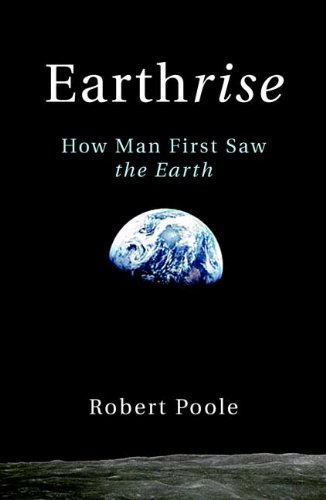 In the beginning, Mitchell wrote, his commitment to exploring inner space and human consciousness with all the rigor of a trained scientist was hampered by the initial public desire to deify him and his moon-walking colleagues. “Frivolous connections were made between the fact that 12 men walked on the moon and that there were 12 disciples of Jesus. Furthermore, I wore a beard at the time and the absurdity seemed to expand to the messianic realm. So I shaved the beard.”
In the beginning, Mitchell wrote, his commitment to exploring inner space and human consciousness with all the rigor of a trained scientist was hampered by the initial public desire to deify him and his moon-walking colleagues. “Frivolous connections were made between the fact that 12 men walked on the moon and that there were 12 disciples of Jesus. Furthermore, I wore a beard at the time and the absurdity seemed to expand to the messianic realm. So I shaved the beard.”
Mitchell set out to question the foundational constructs of materialist science, but quickly discovered the way forward began with questioning his own. “I came to recognize the effects of my own belief system and the powerful
role of enculturated belief systems in general; I needed to reexamine accepted thought with new eyes.”
Embracing his heretical hunch fully, Mitchell decided that “the story of ourselves as told by science—our cosmology, our religion—was incomplete and likely flawed. I recognized that the Newtonian idea of separate, independent, discreet things in the universe wasn’t a fully accurate description. What was needed was a new story of who we are and what we are capable of becoming.”
Challenging the scientific orthodoxy of the time— historically, a death sentence for most institutions and academics—the initial results of IONS’ first decade produced more questions than answers:
- Does consciousness exist beyond the human brain?
- Is it true that everything is interconnected at some subtle level?
- How does the body really heal?
- What are human beings capable of?
The first decade also saw inroads into the holistic health sphere, with IONS sponsoring a conference on the new field of psychoneuroimmunology at the University of California and publishing the instantly popular Health for the Whole Person: The Complete Guide to Holistic Medicine. The inner-space adventure was just beginning.
Exploring the Edges
IONS’ second decade birthed the curtain-ripping Causality Project, which argued that the science of the day was incomplete and ignored important anomalies that could affect all disciplines and inquiries. For example, an inconvenient and foundation-crushing fact for materialist science was what quantum physics call “the observer effect”: the proven principle that the act of observation can affect the phenomenon or system being observed.
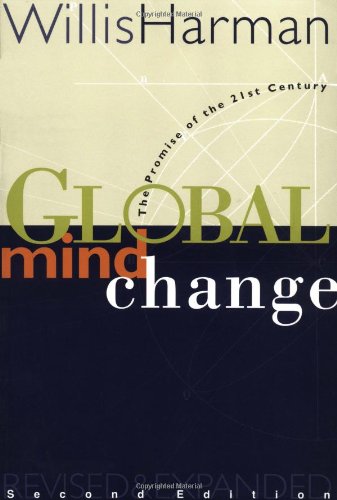 Comfortably standing on the razor’s edge of known and unknown science, IONS perceived its mission to champion new perspectives on the relationship of mind, matter and spirit, and pushed forward. The insights of the Causality Project were presented in Global Mind Change: The Promise of the Last Years of the Twentieth Century, written by IONS’ first president, Willis Harman. The book announced:
Comfortably standing on the razor’s edge of known and unknown science, IONS perceived its mission to champion new perspectives on the relationship of mind, matter and spirit, and pushed forward. The insights of the Causality Project were presented in Global Mind Change: The Promise of the Last Years of the Twentieth Century, written by IONS’ first president, Willis Harman. The book announced:
“Revolutions are generally thought of as large-scale, bloody upheavals involving whole countries and societies. But there are quieter revolutions that begin in the individual mind and create the kind of change that may be even more significant. By deliberately changing their internal image of reality, people are transforming the world. Right now we are living through one of the most fundamental shifts in history—a change in the actual belief structure of Western industrial society.”
Twenty years into the territory of human consciousness and based on IONS’ research insights, IONS’ second president, Winston “Wink” Franklin, made a “noetic” bet:
- That reality is more than physical,
- That everything and everyone are profoundly interconnected,
- That our individual and collective capacities are virtually limitless,
- And that we participate daily in our own evolution, individually and collectively.
At the halfway mark, Franklin’s bet paid off in spades. Over the next 20 years, IONS would witness its cultural impact expand: in popular television documentaries on consciousness and healing that coincided with the establishment of the National Institutes of Health’s Office of Alternative Medicine; with the creation of a worldwide community; and through applied science programs and the beginnings of practical tools for conscious living in the 21st century.
Did you know? Every webpage, nonprofit initiative and impulse to share the New Story carries a sprinkling of moon dust—the echo of an Apollo astronaut’s earthrise epiphany and his revolutionary commitment to explore the frontier of inner space and our human capacities.
Kindred World celebrated the Institute of Noetic Sciences’ 40th anniversary in 2013 and extended our gratitude for IONS’ pioneering research that inspires adventures in conscious living for our Cultural Creative readers.
Cultural Creatives
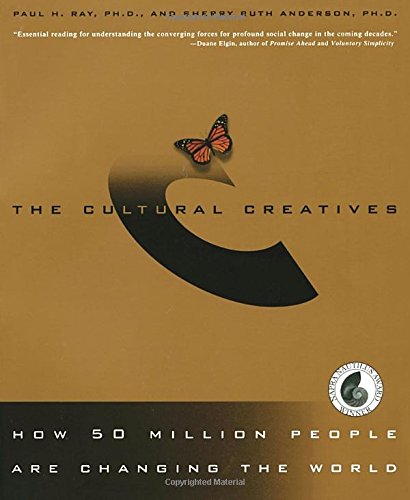 At the end of its second decade, IONS funded a book that would have a profound effect on the participants of the conscious living movement (including Kindred readers). Cultural Creatives were identified for the first time in 2000 by social scientists Paul H. Ray and Sherry Ruth Anderson in their research-based book Cultural Creatives: How 50 Million People Are Changing the World.
At the end of its second decade, IONS funded a book that would have a profound effect on the participants of the conscious living movement (including Kindred readers). Cultural Creatives were identified for the first time in 2000 by social scientists Paul H. Ray and Sherry Ruth Anderson in their research-based book Cultural Creatives: How 50 Million People Are Changing the World.
Ray and Anderson defined Cultural Creatives as people who “care deeply about ecology and saving the planet, about relationships, peace, social justice, and about self- actualization, spirituality and self-expression. Surprisingly, they are both inner-directed and socially concerned; they’re activists, volunteers and contributors to good causes more than other Americans.”
The identification of Cultural Creatives and the role they play in shifting the cultural worldview toward wholeness, healing, wellness and sustainability helped activists from a cross-section of movements understand their frustrations in pushing against an entrenched, unsustainable paradigm and toward a vision, as the book describes, brought forward from within themselves. But the book came with a warning for Cultural Creatives: They were doomed to believe they were alone and powerless until they became aware of their role and their numbers.
“Because they’ve been so invisible in American life, Cultural Creatives themselves are astonished to find out how many share both their values and their way of life,” write Ray and Anderson. “Once they realize their numbers, their impact on American life promises to be enormous, shaping a new agenda for the twenty-first century. What makes the appearance of the Cultural Creatives especially timely today is that our civilization is in the midst of an epochal change, caught between globalization, accelerating technologies and a deteriorating planetary ecology. A creative minority can have enormous leverage to carry us into a new renaissance instead of a disastrous fall.”
Recognition of the role of Pathways readers and their potential in organized, local groups as Cultural Creatives was the direct impetus for the creation of Pathways Connect Gathering Groups. More than 300 groups exist globally and can be found in our online directory.
Cassandra Vieten, Ph.D., IONS’ research director and author of Mindful Motherhood: Practical Tools for Staying Sane During Pregnancy and Your Child’s First Year, says that supportive community is one of the most important things parents can have to help them stay balanced and grow a healthy family.
“We must create a tribe of others who can help us stay awake and aware, and true to our deepest instincts, values and goals as parents, especially when choosing a new way to parent, or if you have a non-traditional family (divorced, single-parent, LGBT or older parents),” says Vieten, a psychologist, mind-body medicine researcher and mom. “Whether in a moms or dads group, through babysitting exchanges with like-minded parents, or increasingly on the Internet, it’s important to have connections that can support us when we feel uncertain or overwhelmed.”
In 2011, Kindred partnered with IONS to bring the first ever Mindful Mothering Conference to the newly founded Museum of Motherhood in New York City. The Mindful Motherhood Project, based on the book and Vieten’s research, offers facilitator training as well as continuing education training for practitioners.
Shift Reports: Evidence of a World Transforming
If, by now, you are feeling inspired by IONS’ 40 years of insights, but wishing for a set of CliffsNotes to help you catch up, then you’re in luck. IONS’ Shift Reports are two 80-page summaries of the most important aspects of the global shift, with generous white space, charts, graphs and pull quotes to help you breeze through the last four decades of mind-blowing consciousness research and insights.
The first Shift Report, subtitled Evidence of a World Transforming, has this to say about materialistic science’s story of who we are and what we are capable of: Its purpose has been fulfilled, and, therefore, it is no longer needed. The 2007 report concludes:
“Materialist science represented an evolutionary leap from a mind-set that relied on religious authority for verifying truths to one that valued an objective search for knowledge. In this global age of rapid change and transformation, it is time for another such leap…[to] include the rigorous study of subjective, inner experience, a renewed appreciation for meaning and purpose, and a recognition that the world of consciousness is far more mysterious and influential than we have ever imagined.”
The second Shift Report, from 2008, subtitled Changing the Story of Our Future, presents “evidence of the crucial role that consciousness plays in any effort to advance toward a more globally sustainable and just civilization. Voting is good, but changing one’s mind and heart is better….By changing those beliefs, we can change the future.”
Worldview Explorations, WE
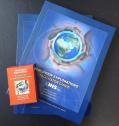
In 2011, I spent a week on IONS’ EarthRise campus to become a trained facilitator of the Worldview Explorations project, WE. The take-home message of IONS’ 40 years of consciousness research shows that “the most powerful step people can take toward achieving their highest potential is the willingness and ability to understand new perspectives.”
This program presents the practical tools for entering the process of exploring one’s own worldview, a process that has been likened to a fish recognizing the water around it. Tricky, but possible.
WE is now taught as a drop-in curriculum module in more than two dozen high schools and universities, from Oakland to Palestine. Its purpose is to help us:
- Stop to explore the landscapes in which we dwell
- Acquire new tools for observing the world around us
- Learn together how to navigate in uncharted realms
- Share diverse perspectives in order to enlarge our collective understanding
- Refresh ourselves by drinking from the deep well of things as they are
Each quarterly issue of Pathways is transformed into a study guide for our global gathering groups. The WE training and Shift Reports appear as foundational moon dust in our Pathways Connect Dialogue and Resource Guides. These condensed guides help us to consider our conscious-living challenges with context and strategies for shifting our views to a place of wholeness and wellness. (You can read past articles on the Worldview Explorations project in Pathways’ online archives.)
The Frontier of Family Wellness
From Worldview Explorations to Cultural Creatives; from Shift Reports showing Evidence of a World Transforming to Mindful Motherhood; from Consciousness and Healing (the book and DVD) to a 10-year research study and survey of world faith leaders presented in the book, Living Deeply: The Art and Science of Everyday Transformation (see interview with Marilyn Schlitz), IONS’ pioneering research has played a formative role in the conscious-living movement and in our readers’ daily lives.
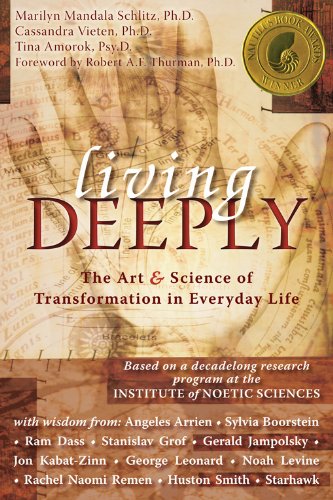 As IONS has questioned the foundations of materialist science, so has Kindred invited pioneering scientists, researchers and activists to question the impact of materialist science and its resulting consumer culture on all issues that affect our children’s health.
As IONS has questioned the foundations of materialist science, so has Kindred invited pioneering scientists, researchers and activists to question the impact of materialist science and its resulting consumer culture on all issues that affect our children’s health.
It is materialist science, and its disconnected view of the physical world from its innate intelligence, that has spawned a consumer culture whose conformist demands leave parents confused and uninformed on what exactly wellness and wholeness are.
A cellular biologist and internationally recognized authority in bridging science and spirit, Bruce Lipton, PhD, explains how our genes are not deterministic (a materialist science view), but are selected based on the environment of the cell. In a human body, the cell’s environment is determined by perceptions, and those perceptions are based on beliefs.
In addition to encouraging parents to examine their own beliefs, Lipton advocates the need for parents to create a supportive perinatal environment for their children to ensure their long-term success and well-being. In a previous issue of Pathways, Lipton connected the dots between human consciousness and child wellness:
In today’s world, we judge our success by material possessions, which is understandable in a world based on Newtonian physics that says ‘matter is primary.’ And we measure how successful we are by how many toys we end up having, how much we own—this gives us our status in a hierarchy. Well, the problem with this is that this is not really where health and happiness come from. Health and happiness come from inner harmony.
When a human is born, they’re already filled with an intuitive knowledge of centuries and centuries of people beforehand. A child has wisdom. Their cells have wisdom. If we listen to that wisdom, it’s very instructive. If we ignore it because of our hubris and think, ‘We are intelligent, the baby’s not intelligent, we’ll tell the baby what to need,’ then what we’re really doing is stepping on Mother Nature’s natural intelligence. So, it’s really incumbent upon us to let go and follow the natural instincts. When you’re living in harmony, you can feel it. When you’re pushing on the system, if you’re sensitive enough, you can feel you’re doing that. What we really require is the sensitivity to recognize that a child is extremely intelligent.
We have stopped listening to nature. And this is the biggest problem that humanity is facing. Our inability to understand nature has led to a state where human civilization is facing extinction because of the way we are damaging nature and destroying the environment without owning the truth—we are the environment. It’s time to return to the natural understanding, to the innate intelligence of the entire world, not just of the baby that’s born. The entire world, the entire biosphere, is an intelligent system. And right now, the least intelligent unit appears to be the human, but we’re being forced to look at life in a different way.
In Kindred, we recognize that our adult consciousness is the soil our children spring forth from and flourish. And as Edgar Mitchell found, it is in the questioning of our own beliefs that we find the trailhead for our pathways to family wellness. As Cultural Creative families—exploring our worldviews, bringing forth the vision of wholeness within ourselves, mindfully caring for our children, and aware that our daily choices matter because we are participating in a connected and conscious world—we find empowerment naturally, and model this understanding for ourselves, our communities and for the next generation.
From our readers and staff, thank you, Captain Edgar Mitchell, for your courageous choice to begin an epic, inner space adventure. And thank you, IONS, for 40 years of frontier science insights you have and will continue to contribute toward our global family’s expanding awareness of our innate intelligence, our collective consciousness and our exciting capacity for change.
This article first appeared on the cover of Pathways to Family Wellness Magazine in spring 2013 in honor of IONS’ 40th anniversary. At the time, Lisa Reagan served as both Kindred’s editor and Pathways’ associate editor.



